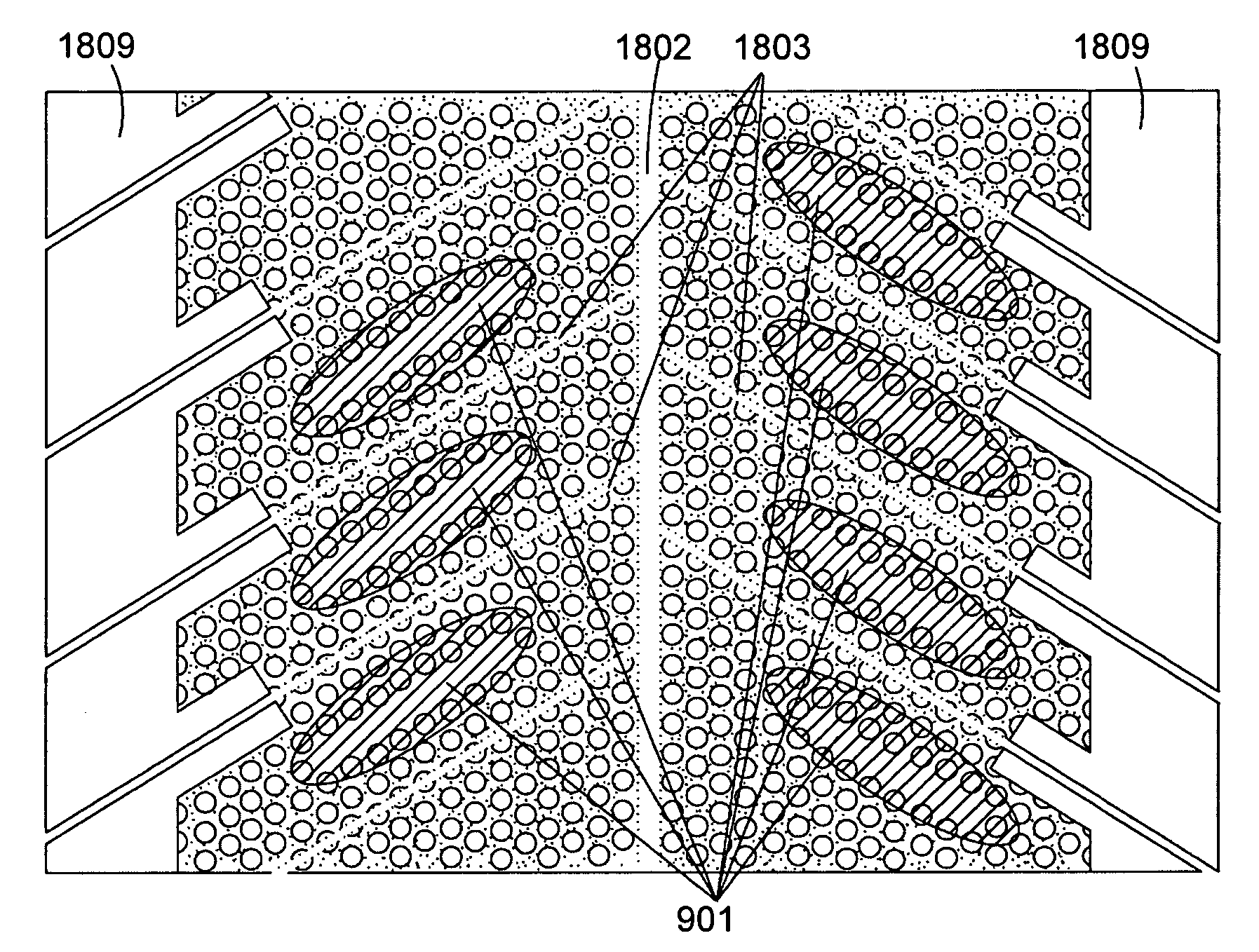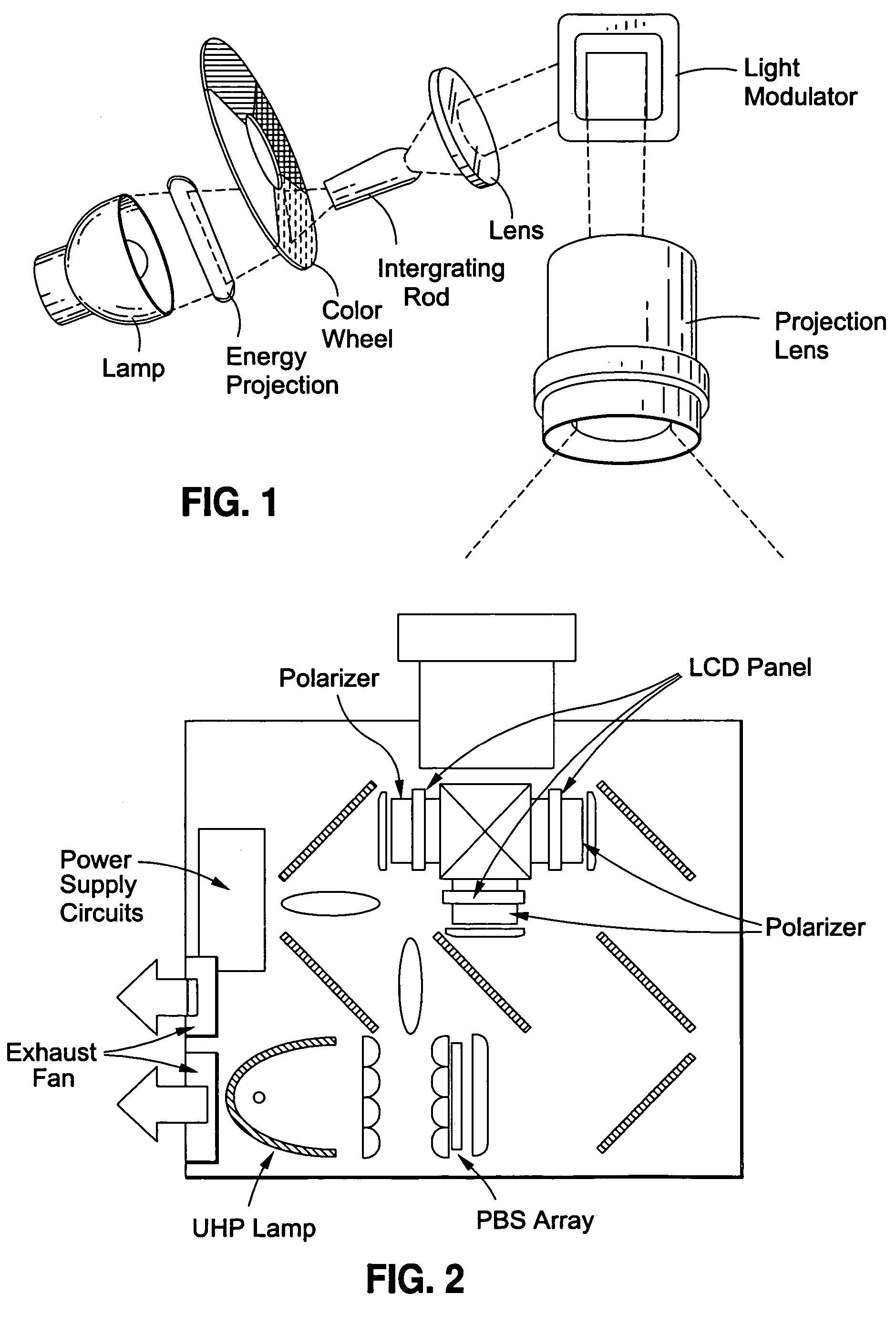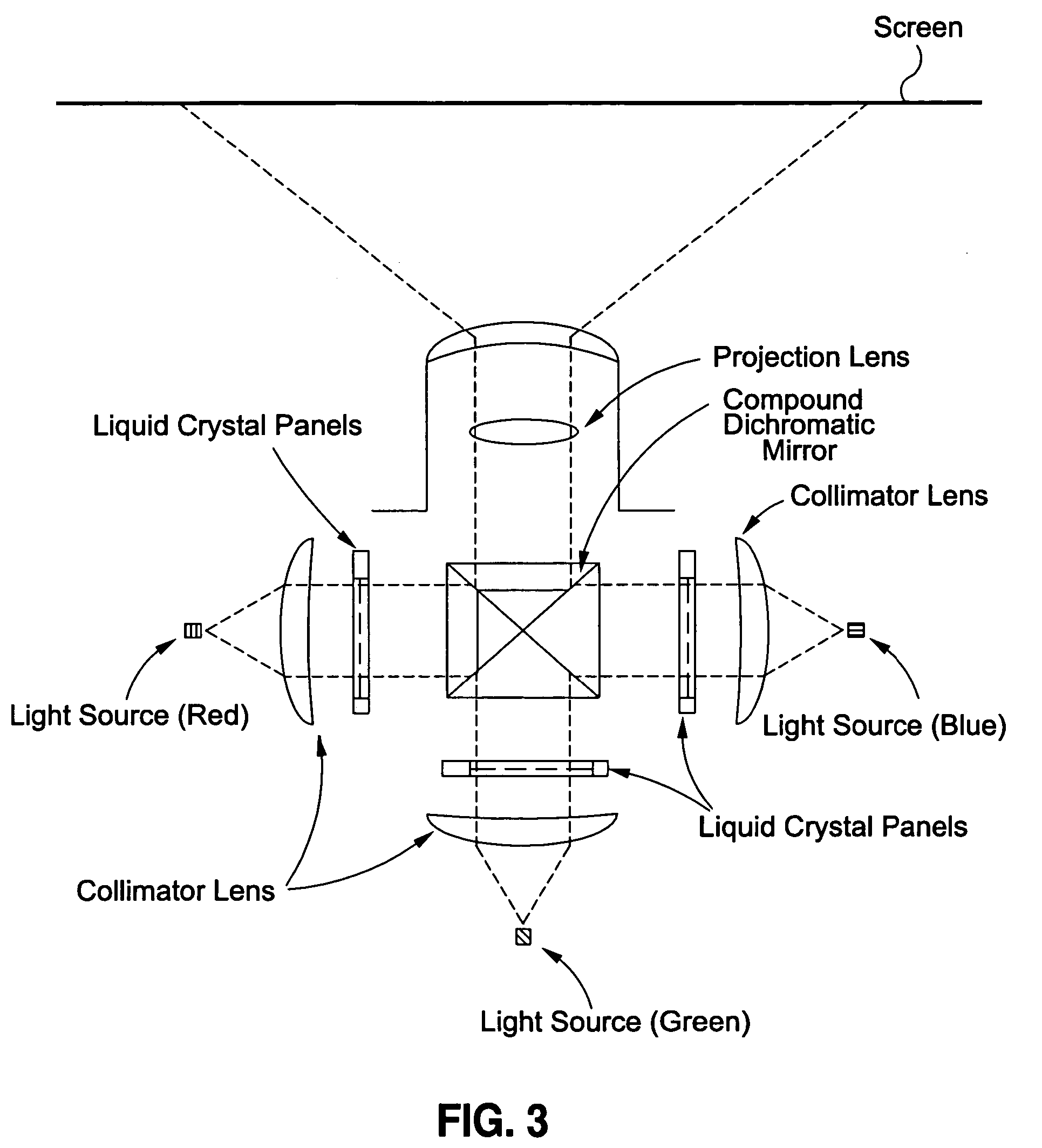Light-emitting photonic device
a photonic device and light-emitting technology, applied in semiconductor lasers, lighting and heating equipment, instruments, etc., can solve the problems of increasing manufacturing costs and equipment size, increasing device size, power consumption, and product quality, and reducing the lifetime and reliability of light sources. , to achieve the effect of minimizing crosstalk and avoiding crosstalk
- Summary
- Abstract
- Description
- Claims
- Application Information
AI Technical Summary
Benefits of technology
Problems solved by technology
Method used
Image
Examples
Embodiment Construction
[0104]Referring to FIG. 5, the embedding of an array of photonic crystal light sources (or microcavities) in a media of photonic crystal is shown. The array of single mode photonic crystal light sources is also coupled into a common waveguide to generate output.
[0105]The concept of non-cross-talk optical power collection system can be achieved by forming the array of microcavities to resonate at different wavelengths. By doing so, each individual microcavity will naturally reject any optical power at different wavelengths (i.e. from a different microcavity).
[0106]As seen in FIG. 5, the coupling bandwidth from each mode to the common waveguide is smaller than the wavelength spacing between any two light sources in the array. Therefore, there is virtually no cross-talk between any two light sources in the array through the waveguide. Such a natural optical isolation mechanism can be demonstrated by numerical simulation, such as by FDTD (finite-difference time-domain) simulation. For i...
PUM
 Login to View More
Login to View More Abstract
Description
Claims
Application Information
 Login to View More
Login to View More - R&D
- Intellectual Property
- Life Sciences
- Materials
- Tech Scout
- Unparalleled Data Quality
- Higher Quality Content
- 60% Fewer Hallucinations
Browse by: Latest US Patents, China's latest patents, Technical Efficacy Thesaurus, Application Domain, Technology Topic, Popular Technical Reports.
© 2025 PatSnap. All rights reserved.Legal|Privacy policy|Modern Slavery Act Transparency Statement|Sitemap|About US| Contact US: help@patsnap.com



